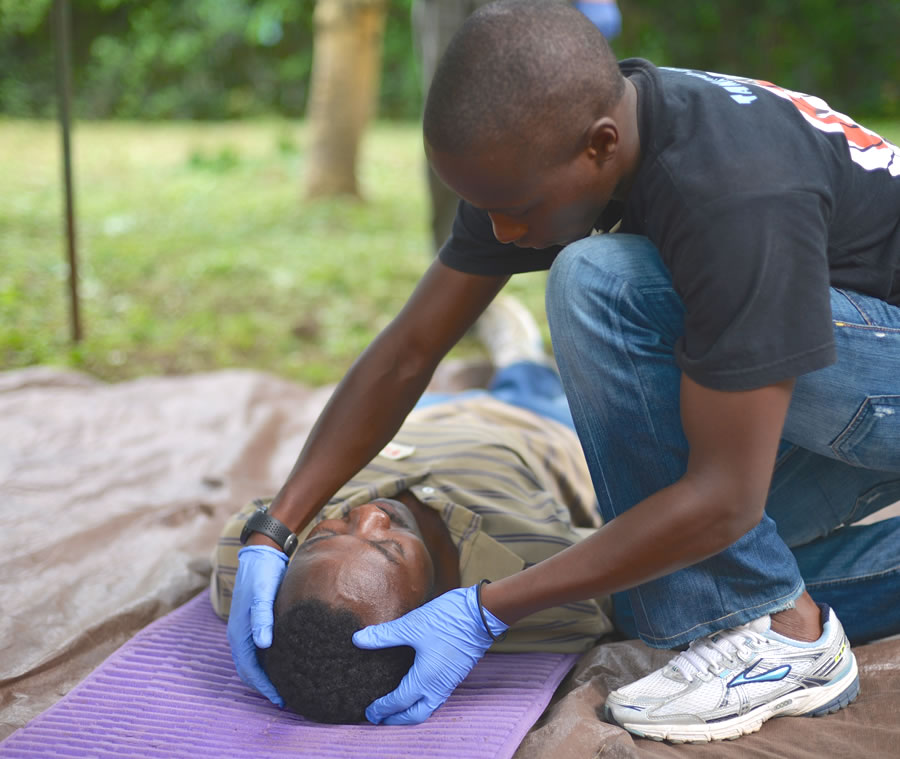Blog
How to Prepare for and Respond to Emergencies
- April 21, 2023
- Posted by: Desire Obanefe
- Category: First Aid

Defining Emergency
This is “something dangerous or serious, such as an accident, that happens suddenly or unexpectedly and needs fast action in order to avoid harmful results”. – Cambridge Dictionary
An emergency is a sudden, often devastating occurrence which may pose a threat to lives, property and the environment; especially if on a large scale and prolonged.
Recognizing an Emergency
First aid providers must develop skills that will help them recognise when there is an emergency. They should be able to use the following indicators to do that:
- Unusual noises
- Unusual sights
- Unusual odours
- Unusual appearances
What are the actions to be taken during an emergency?
In any emergency there are usually life-threatening hazards. “…It is important that you follow a clear plan of action. This will enable you to prioritize the demands that may be made upon you, and help you decide on your best response. The principle steps are: to assess the situation, to make the area safe (if possible), and to give first aid. Use the primary survey procedure to identify the most seriously injured casualties and treat them in the order of priority.” – First Aid Manual by American College of Emergency Physicians
Assessing the scene correctly is one of the most important factors in the management of an incident. You should stay calm. State that you have first aid training and, if there are no medical personnel in attendance, calmly take charge. Identify any safety risks and assess the resources available. Some hazards that may be at the scene may include fire, tripping hazards, sharp objects, chemical spills, and falling debris. Safety is key. Your safety, safety of the casualty and by-standers.
Safety: What are the dangers and do they still exist? Are you wearing protective equipment? Is it safe for you to approach?
Scene: What factors are involved at the incident? What are the mechanisms of the injuries? How many casualties are there? What are the potential injuries?
Situation: What happened? How many people are involved and what ages are they? Are any of them children or elderly?
How to call for help
- Call 911 for emergency help if the casualty needs urgent medical attention and should be transported to the hospital in an ambulance, for example, when you suspect a heart attack.
- Take or send the casualty to a hospital. Choose this option when a casualty needs hospital treatment, but his condition is unlikely to worsen; for example, with a finger injury. You can take him yourself if you can arrange transportation—either in your own car or in a taxi.
- Seek medical advice. Depending on what is available in his area, the casualty should be advised to call his own physician or nurse practitioner. He would do this, for example, when he has symptoms such as earache or diarrhea.
When calling for help in an emergency, stay calm. Be clear and concise and give as much detail as possible. When you dial 112, you will be asked which service you require. If there are casualties, ask for the ambulance service (EMS); the dispatcher will alert other services if they are required. Always remain on the telephone and let the dispatcher hang up first, because you may be given important information about what to do for the casualty while you wait, and/or asked for further information as the situation develops. If someone else makes the call, make sure that he is aware of the importance of his call and that he reports back to you after making the call.
Talking to the Emergency Services
State your name clearly and say that you are acting in your capacity as a first aider. It is essential to provide the following:
- Your telephone number and/or the number you are calling from.
- The exact location of the incident; give a road name or number. It can also be helpful to mention any intersections or other landmarks in the area. In many cases your call can be traced if you are unsure of your exact location. If you are on a highway, say in which direction the vehicles were traveling.
- The type and gravity of the emergency. For example, “Traffic accident, two cars, road blocked, three people trapped.”
- Number, gender, and age of casualties. For example, “One man, early sixties, breathing difficulties, suspected heart attack.”
- Details of any hazards, such as gas, toxic substances, power-line damage, or adverse weather conditions, such as rain, etc.
